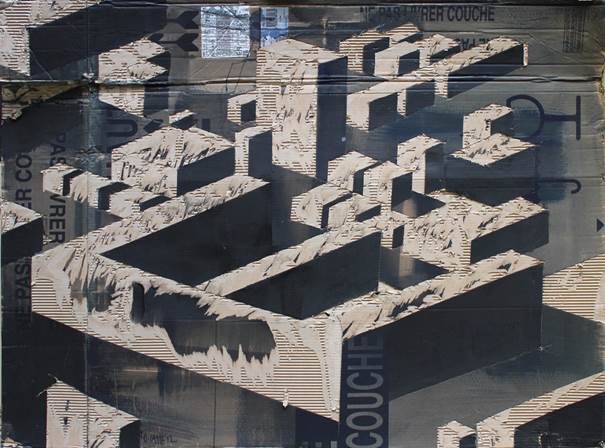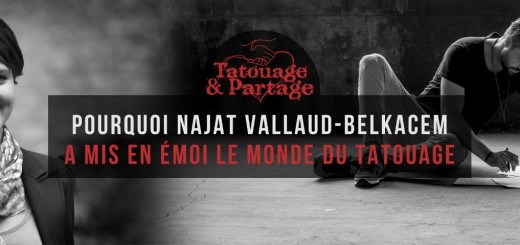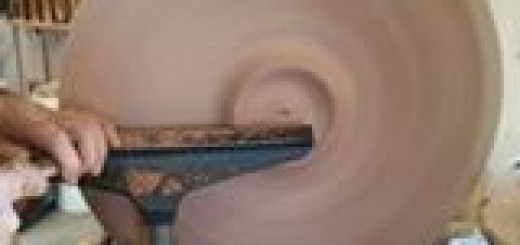Robert Capa, le célèbre photo reporter de guerre, disait, “si la photo n’est pas bonne, c’est que vous n’étiez pas assez près“.Youri Lenquette a toujours été près. Dans l’univers paranoïaque des backstages et des entourages de groupes, il entrait là où le reste de la presse essuyait une rebuffade parfois brutale. Comme s’il avait dégagé des ondes, émis des ultra sons qui indiquaient aux musiciens qu’il était des leurs.
Sans faire pleurer dans les chaumières, Youri a grandi un peu tout seul. Très tôt, donc, il avait déjà plus vu, vécu et bourlingué que la plupart de ses futurs collègues. Nous fantasmions sur un “mode de vie rock”. Youri l’avait déjà, à certains égards, testé. Peut-être ça, après tout, que les musiciens sentaient.
Mais s’il avait le privilège d’être admis de l’autre côté de la barrière, autour du feu de camp, son expérience, son instinct, son ange gardien, lui faisaient toujours garder la bonne distance. “Assez près” pour que la photo soit bonne, mais pas trop proche non plus de la flamme, afin de ne pas s’y brûler. Combien de compagnons de route des groupes se sont carbonisés à leur contact. Youri, lui, est encore là, indemne, pour exposer et témoigner.
En 1981 il était correspondant du mensuel Best à Londres. Son premier reportage correspondit à mon premier voyage de presse pour Rock&Folk : un abject concert de Adam & the Ants, mais j’ai des raisons de ne pas regretter le déplacement, entre autres parce queLenquette et moi devînmes illico amis. Et dans les années qui suivirent, je pus le voir évoluer professionnellement. La photo qui, ado, avait été un hobby distrayant, puis, une fois journaliste, une manière de compléter ses articles, devint bientôt un métier et même un art. Mais toujours, quoiqu’il arrive, en se tenant “assez près“ pour que Robert Capa approuve.
Laurent Chalumeau : Quels sont les critères qui ont décidé de la sélection des photos ?
Youri Lenquette : Tantôt l’intérêt documentaire, tantôt d’éventuelles qualités graphiques. Par exemple, tu as la photo de Mick Jones, Captain Sensible et Bernie Rhodes assis en rang d’oignon. La photo n’est pas renversante, mais elle fixe un moment : six mois plus tard, la messe sera dite, les Clash seront partis jouer dans une toute autre league. Mais là, tout le monde est encore au même niveau et tape la discute, tire sur le pète. D’autre fois, la photo est intéressante ou pittoresque, mais elle donne à voir de parfaits inconnus. Et puis parfois, tu as le coup de bol : c’est bien cadré, bien composé et ça dit quelque chose d’un de tes musiciens préférés.
LC : Il se dégage des photos une spontanéité et une absence de prétention qui colle assez bien au sujet. Comment les considères-tu aujourd’hui?
YL : A l’époque, je voyais ça comme des souvenirs, des aides mémoire, des moments capturés. Puis des illustrations pour donner vie à mes articles. Il n’y a pas encore de réflexion derrière. C’est surtout de la photo de fan de musique, plus que de photographe. Le bol, après, c’est que les musiciens que je photographiais aient conservé un intérêt trente ou trente-cinq ans plus tard et qu’ils aient été dès cette époque plutôt photogéniques.
Et puis à force d’en faire, je me suis rendu compte que mes articles, tout en étant corrects, n’avaient aucune chance de développer une dimension artistique propre et resteraient donc toujours à la remorque du travail de quelqu’un d’autre. Tandis que les photos, ma foi, même si j’étais encore très tâtonnant, au moins, c’était quelque chose que je produisais moi. C’était plus stimulant.
LC : Certaines photos donnent l’impression d’avoir été prises sur scène par un membre du groupe.
YL : Vu l’ambiance dans les concerts punks de l’époque, être devant la scène avec un appareil photo, c’était mission impossible. Le seul moyen pour ne pas être trop bousculé, c’était d’être sur scène. A condition, bien sûr, que le groupe accepte de t’avoir dans les pattes.
LC : Justement, j’ai toujours été frappé par ta proximité immédiate avec les musiciens et l’accès total qu’ils t’accordaient, tandis qu’ils se méfiaient des autres journalistes ou photographes. Comment l’expliques-tu ?
YL : Je ne sais pas. La sincérité de mon enthousiasme devait être patente. Et puis, peut-être aussi parce que j’essayais de me comporter le plus naturellement possible. La bonne attitude, en fait, c’est de n’en pas avoir. La limite de l’exercice, après, c’est qu’on t’accepte comme un membre de la bande aussi parce que tu sais quand tu dois t’arrêter de photographier. Or, il y a parfois des trucs que tu regrettes de ne pas avoir pu shooter, ou même filmer. Je me souviens par exemple d’un après-concert avec Motörhead qui fut un condensé de tout ce qu’on peut lire ou fantasmer sur les excès du “mode de vie rock & roll”. On est partis avec des bikers dans leur local, puis, avec eux, on est allé dans un routier où ça a failli finir en baston, puis après dans un bar à putes à Marseille, tout ça bien sûr dans une sarabande de transgressions diverses, mais aussi dans une atmosphère très bon enfant. Mais là, évidemment, pas question de sortir ton appareil.
LC : A propos de bikers, justement, tu penses que les moments passés avec les membres d’un club de la côte t’avaient appris à te faire discret.
YL : Peut-être. Mais c’est surtout l’intérêt pour les motos autres que japonaises qui constituait une bonne entrée en matière avec les musiciens. Les gars te voyaient arriver pour l’interview ou la séance sur une machine intéressante, ça pouvait te distinguer des collègues. Ou si ça venait dans la conversation, subitement, le genre de moto que j’aimais, ça faisait un point commun, ça créait une complicité. D’autres journalistes ont sans doute dû avoir ça avec le foot.
LC : Ces photos courent sur presque dix ans. Avec le recul, que penses tu qu’elles racontent de toi, ou de l’évolution de ton regard?
YL : C’est le passage de l’amateurisme éclairé au professionnalisme. Exactement comme les musiciens punks que je shootais ou côtoyais. Nous avions le même âge. Ils avaient attrapé une guitare, moi un appareil. Mais si tu prends punk au sens de dadais de vingt ans arrogant qui déborde d’énergie et d’appétit de vivre vite, ici et maintenant, c’est sûr : pendant ces années-là, eux comme moi, nous étions punks. Après, on s’est tous mis à mieux savoir ce qu’on faisait. Ça, c’est la bonne nouvelle. La moins bonne, c’est que du coup, nous avions moins vingt ans ! C’est ça l’évolution : le passage à une photo mieux réfléchie, mais donc à l’âge adulte. Comme je disais : avec la chance que les sujets aient bien vieilli et que plusieurs fois, moi et mon appareil, on se soit trouvés au bon endroit au bon moment.
ADDICT Galerie & JM Patras présentera “PUNK NUGGETS, Original Artyfacts 1977 – 1985“, une exposition des photographies de Youri Lenquette, du 19 Novembre 2013 au 11 Janvier 2014.
Youri Lenquette interviewed by Laurent Chalumeau
Robert Capa, the famous war photo reporter, used to say: “If your pictures aren’t good enough, you’re not close enough“. Youri Lenquette has always been close. In the paranoid universe of back stages and of band entourage, he arrived where the rest performed a somehow brutal retreat. As if he had released waves, or had emitted ultra sounds showing the musicians he was one of them.
Without making a fuss about it, Youri grew up on his own. Soon he had seen, lived and experienced more than most of his future colleagues. We were still fantasising about the “rock way of life”, while in certain regards Youri had already tested it. Perhaps it was this, after all, that the musicians could feel.
While having the privilege of being admitted to the other side of the barrier, around the bonfire, his experience, his instinct, and his guardian angel always made him keep the right distance. “Close enough” for the picture to be good, but not too close to the fire, not to get burnt. Many travel companions of these bands were carbonised upon contact. Youri is still here, safe and sound, for exposing and testifying.
In 1981 he was the London correspondent for the monthly magazine Best. His first assignment coincided to my first trip for Rock&Folk: a miserable concert of Adam & the Ants, but I have reasons for not regretting it, among others because that is where Lanquette and I became friends. In the following years I saw him growing professionally. Photography, which at the start was an engaging hobby, and, once a journalist, a way for completing his articles, soon became a profession and also an art. But always, regardless of what happened, being “close enough” for Robert Capa to approve it.
Laurent Chalumeau : Which are the criteria on the basis of which you selected the pictures ?
Youri Lenquette : The documentary interest, as much as other possible graphic qualities. For instance: the photo of Mick Jones, Captain Sensible and Bernie Rhodes sitting in a circle. It’s nothing astonishing but it captures a moment: six months later, the verdict was released, the Clash were part of a totally different league. But there, everybody is still at the same level, chatting and smoking pot. Other times, the picture is interesting or picturesque, but it represents perfect strangers. And then, sometimes, you are lucky : it is well framed, well composed and it says something about one of your favourite artists.
LC : From your pictures, stand out spontaneity and a lack of pretension that fit well your subjects. How do yow consider them today ?
YL : At the time, I saw them as souvenirs, as something that could help me remember, as a stolen moment. Later, as illustrations able to give life to my articles. There still is not a precise thought behind. It is mainly photography from someone passionate about music more than mere photography. Luckily the musicians I photographed are still interested in music thirty or thirty-five years later, and were back then quite photogenic.
And then, as I kept taking pictures, I realised that, even if correctly written, my articles stood no chance of developing an artistic dimension of their own and they would have always been dependent on the work of someone else. Whilst my photographs, I believe, were at least something I was making myself, even if I was just at the start. It was more stimulating.
LC : Some of your pictures give the impression of being shot by a member of the band.
YL : Considering the environment of a punk concert of those times, being in front of the stage with a camera was mission impossible. The only way for not being knocked over, was to be on the stage. On the condition, of course, that the band accepted to have you around.
LC : Indeed, two things always struck me: the way you could immediately establish proximity with the artists and the way they would grant you complete access, while distrusting the other journalists and photographers. How would you explain this?
YL : I don’t know. The honesty of my enthusiasm was probably obvious. Also, it might have been that I tried to be myself as much as possible. In fact the good attitude is not to have an attitude. The limitation is, in the end, that you get accepted as a member of the band because you know when you are supposed to stop taking photos. There are, sometimes, things that you regret you couldn’t shoot or grab.
For instance, I recall an after-concert with Motörhead which was a condensed version of whatever you might read or fantasise about the excesses of the “rock & roll way of life”. We headed with some bikers towards their quarter, then, we went with them to a diner where it nearly ended up in a fight, then again to a brothel in Marseille, all this in a sequence of transgressions, but also in a friendly light-hearted atmosphere. And of course, no chance of using my camera.
LC : Speaking about bikers, you reckon that the times spent with a club of the French Riviera taught you to ride quite well.
YL : Maybe. But it is mainly the interest in motorbikes other that the Japanese ones that made a good contact point with the musicians. If the guys saw you getting to the interview or to the shooting on an interesting engine, that could distinguish you from your colleagues. Or if the conversation touched the subject of what kind of motorbike I liked, soon that would turn into a shared interest, it would create complicity. For sure other journalists had this with football.
LC : These pictures show nearly ten years. Looking back, what do you think they say about you, or about the evolution of your gaze ?
YL : It is the passage from an enlightened amateurism to a profession. Exactly as the punk artists I used to shoot or hang out with. We had the same age, they grabbed a guitar, I grabbed a camera. But if you say punk in the meaning of twenty year old, arrogant kids overfilled with energy and craving for living fast, here and now, well, it is obvious : during those years they, just as myself, were punk. Later, we all had a better vision of what we were doing. This is the good news. The bad one is that, all of a sudden, we weren’t twenty anymore! This is the evolution, the passage to a more experienced shot, but necessarily to adult age. As I said, I was lucky that the subjects of my photos have aged well and that many times, my camera and I, found ourselves in the right place at the right time.
ADDICT Galerie & JM Patras will present “PUNK NUGGETS, Original Artyfacts 1977 – 1985”, an exhibition of the photographer Youri Lenquette, from November the 19th 2013 to January the 11th 2014.
Visuels et informations disponibles sur demande
Images and informations available upon request
ADDICT Galerie – Galerie Laetitia Hecht
14/16 rue de Thorigny 75003 Paris
T:+33(0)1 48 87 05 04
info@addictgalerie.com
www.addictgalerie.com
Horaires d’ouverture / Opening hours
Mardi – Samedi 11:00 – 19:00 et sur rendez-vous
Tuesday – Saturday 11am – 7pm and by appointment
FOLLOW US






